Whether a cat purrs and cuddles depends not so much on the breed, but on the attitude of the owner. A loving, caring family will produce a kind and affectionate pet.
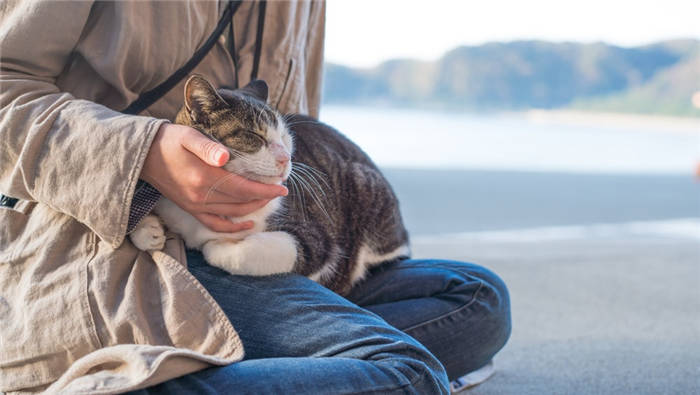
- Why does a cat purr and what does a cat purr mean?
- Why do cats purr?
- What does a cat's purr mean?
- Interesting facts about the effects of purring
- Why cats purr
- What cat purring means
- What does it mean when a cat purrs?
- Why does a cat purr and stomp its paws at the same time?
- Why do cats purr, what does it mean?
- What to do if a cat doesn't purr?
- What happens inside a cat when it purrs?
- Why does a cat purr?
- How does it purr – physiology
- Why a cat purrs – causes
- Why does a cat purr when stroked and what does that purr mean?
- Can cats purr for different reasons
- Cat purring as a way to manipulate
- How does a cat's purr affect humans
- Deciphering a cat's purr
Why does a cat purr and what does a cat purr mean?
A cat's purr, a steady, vibrating sound with a soothing frequency, is perhaps the most distinctive sound for a cat. Most owners associate it with a pet's blissful contentment, though it can actually have different tones and convey different messages.
The functions of the purr are almost as mysterious as the mechanism of this sound.
Most of us associate purring with the image of a contented cat-it is being stroked, or waiting to be fed, and it purrs with pleasure. That is certainly a valid association. But it is important to know that purring did not originate to proclaim to the world that a cat is blissful.
Why do cats purr?
Each sound made by an animal has a specific evolutionary function – slightly modified in the process of domestication, but still having the same roots. Purring, moreover, is not always the same – several variations of this sound can be distinguished.
For starters, it's worth clarifying that kittens start purring at about one week of age and make this sound when suckling on their mother's milk.
The purring of the kittens is a signal to the cat that her babies are okay and each one is eating.
The cat itself also purrs while she feeds – this reassures the kittens that she is friendly and has a calming effect on them.
In this early period of life, purring is the most important form of communication and creates a very strong bond between the mother cat and her babies.
Both in the interaction between adult cats and cats, and between cats and people, purring no longer plays as important a role as it does in the communication between cat and kittens. It is worth adding that adult cats use purr in intraspecific communication infrequently, but they use it much more often in communication with people.
What does a cat's purr mean?
Scientists believe that whiskered pets make these sounds on several occasions. As it turned out, cats purr almost from birth. And this is the reason for Bjarne Brostad, a professor at the Norwegian University of Ecology and Biological Sciences, to believe that the animal shows it is satisfied in this way and that it does not need to change anything.
He came to this conclusion by observing how kittens purr near their mother and near humans. However, during his research, he noted that there is another type of purring – it is higher in timbre and louder. According to the scientist, this is how cats show that they want something from their owners, for example, to demand food. Sometimes they also purr when they are hurt. In such cases, scientists suggest, the animal is trying to calm down. All members of the feline family can purr, even lions.
Interesting facts about the effects of purring
In a study in the 1990s at the State University of New York, scientists found that bone density increases when bones are exposed to low frequencies, writes Freemalaysiatoday. The experiment was conducted on turkeys, and the experience confirmed the scientists' assumption.
Cat purring falls right into this category – from 25 to 150 Hz. Consequently, it is likely that purring is part of a cat's way of staying healthy and recovering from injury. Healthy cats also purr when they are around injured people, probably in an attempt to help with healing.
And researchers at the University of California have proven, as AiF reports, that cats can have therapeutic effects on the human body as well. The experiment involved 20 people who had to look at a photo of cats and listen to their purring for several minutes. It turned out that cats' purring normalizes blood pressure and improves the tone of blood vessels in the brain. It has also long been proven that purring can be soothing, which helps reduce the risk of heart attack and hemorrhagic stroke.
Why cats purr
Domestic cats purr every day. Listen to your pet snuggled up in the sun. He will purr even in your absence. But not always from pleasure. There can be many more reasons why cats purr. And not all of them are positive. Let's break down the research on the subject and give the opinions of feline behavior experts and feline scientists.

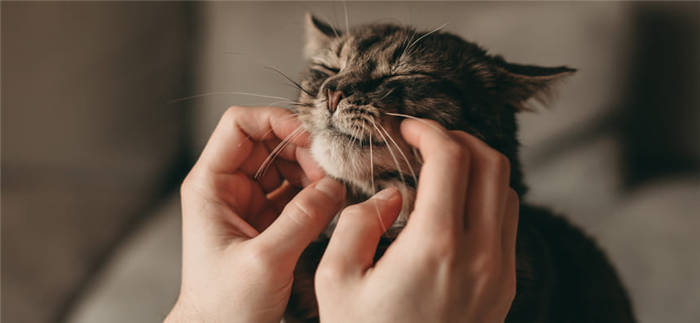
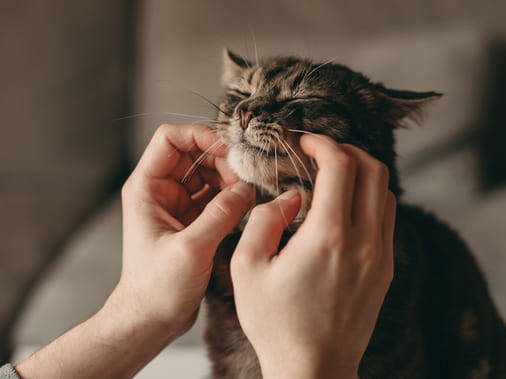
What cat purring means
For years, a cat's purr was considered a response to positive emotions. Scientists ranked it on a par with other means of communication, such as meows and hisses. But what exactly made cats purr was unclear. After all, animals could make a purr while sitting alone or suddenly vibrate at the sight of a mate.
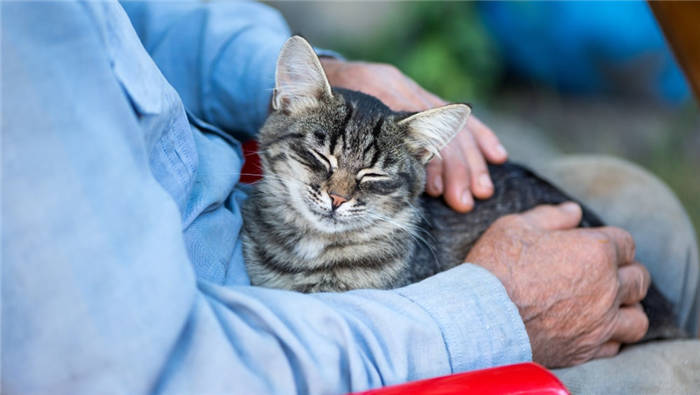
In the early 2000s there was more research on cats and the subject of purring was discussed in a new way. According to cat behavior specialists Elisabeth von Muggenthaler, Karen Overall and a group of scientists from the University of North Carolina, there are several variations on why cats want to purr. Experts say: a cat purrs to socialize, to calm itself, or to heal from an injury or illness.
We've compiled 7 options for why your cat might be purring at this very minute:
If your cat is comfortably nestled in your lap and receiving attention and affection, the purring sounds will appear as a sign of approval. Body language demonstrates complete satisfaction: the cat's eyes are slightly covered, its tail is pulled to the side or wrapped around its body, remaining motionless.
At these moments, the cat may begin to move its front paws, slightly releasing its claws. From the outside it will look like it is stomping on the spot, but in fact it is an instinctive manifestation called the "milk step". As babies, kittens massage their mother's milk nipple to increase the flow of milk. And in adulthood, they recall the old habit in moments of complete relaxation.
Cats living in groups behave in the same way: if they live together and help each other to wash up after supper or before going to bed, they purr to show their affection.
Also cats can purr after a successful hunt or at the sight of potential prey. For example, sitting near a window and watching birds flying by. However, the volume and intensity of purring sounds at these moments will be slightly lower.
What does it mean when a cat purrs?
It is generally accepted that a cat purrs when it feels good. Here she has eaten her favorite tuna sausage and settled on the warm lap of the mistress – how can you resist?
Indeed, a pet purrs when it is nourished, warm and relaxed. He can thank you with a gentle purr when you talk to him affectionately. When you scratch his ear. When you go to the fridge to get canned food. When you give him a super-soft, fuzzy cot. In short, when you create a comfortable, safe environment and show your love. But those aren't all the reasons.
It turns out that a cat can purr not only when it feels good, but also when it feels really bad.
Many cats start purring during childbirth or when they are sick. Others "turn on" purring when they are stressed, afraid or angry. For example, a cat may suddenly purr while sitting in a carrier on a rumbling bus. It's unlikely she's enjoying the journey. More likely, she's afraid.
There is a theory that purring promotes the production of a hormone that reduces pain and calms the cat. That is, if a cat feels unwell, it starts purring to heal or soothe itself. University of California researchers believe that purring (or rather, body vibration) also tones the musculoskeletal system. After all, cats are inveterate sleepers, and they spend a lot of time without movement. So, purring is a kind of passive fitness.
And also purring is a way of communication. By purring, cats communicate with humans and with each other. A nursing mother starts purring so that the kittens react and crawl up to drink the milk. While feeding, she continues to purr to soothe her babies. Kittens purr to tell their mom, "we're full." Adult cats purr to invite fellow cats to play. But the amazing thing is that a healthy cat can start purring when it sees another cat in pain. Empathy is no stranger to them.
Why does a cat purr and stomp its paws at the same time?
Cat owners often ask why a cat purrs and stomps with its paws at the same time. For example, a pillow, a comforter or the owner's knees? The answer is a pleasant one: your cat feels very good at these moments.
For cats, this behavior is a reference to deep childhood. When kittens drink their mother's milk, they purr and massage their mother's belly with their paws ("milk step") to increase the flow of milk. For many, this scenario is not forgotten in adulthood. Of course, the cat no longer asks for milk. But when she feels good, nourished, warm and safe – a child's behavior pattern makes itself felt.
If your cat purrs and paws often, congratulations: you are a great owner.
Why do cats purr, what does it mean?
Cats are some of the most popular pets in the world. And it's no wonder. Such cute, gentle and funny creatures leave few people indifferent.
Many people also note another amazing quality of domestic cats, which causes a storm of emotions and has a positive impact on human well-being and health. We are talking about the purring of a cat. What is it? Why do cats purr? Who else among the animals is capable of making such a chirping and melodious sound? Let's find out.
A purr is a specific purring sound that is made by almost all members of the feline family, as well as some wyverns (predatory mammals). The peculiarity of cat purring is that it is accompanied by a perceptible vibration of the animal's body.
I wonder how cats purr? The main organ responsible for purring is the brain:
- Its cortex generates impulses that "make" the cat purr. The purring mechanism is connected with special muscles in the cat's throat. When they receive a signal from the brain, they go into motion, expanding and contracting the part of the larynx where the vocal cords are located.
- And the special tapping sound and vibration are due to the presence of the cat's hyoid bones. Thus, the air passing through the larynx vibrates with every inhalation and exhalation of a feline.
Why do cats purr? Most lovers of these graceful animals believe that a cat purrs when it feels good. Undoubtedly, the main reason why cats purr is satisfaction. If a cat feels warm and cozy, has tasty food, played with or caressed, its purring is gratitude to its owners. This is how he expresses his love and affection.
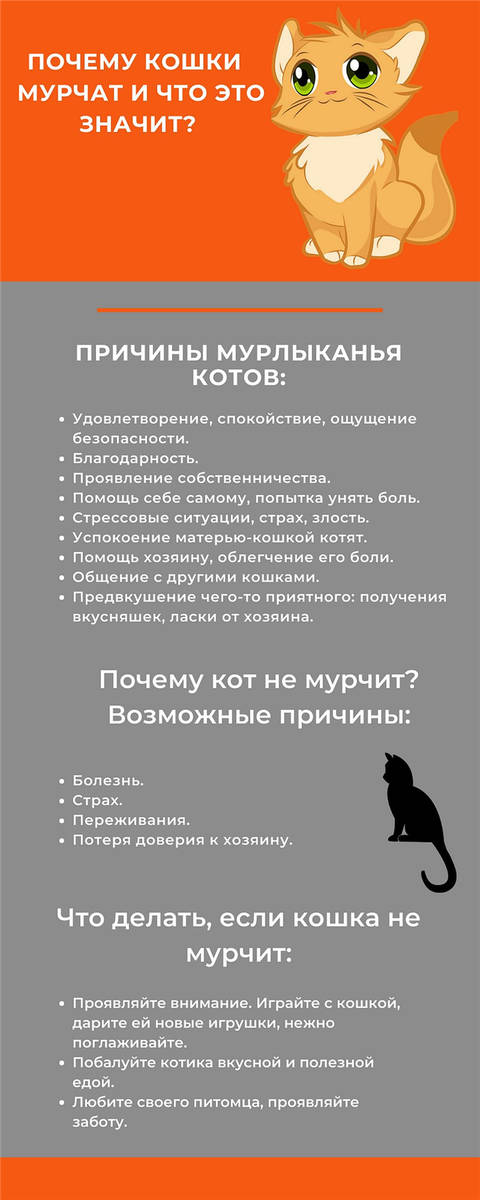
But cats purring is not always associated with pleasant moments of their lives. Here are some of the main reasons that provoke a cat to purr softly or loudly:
What to do if a cat doesn't purr?
We were able to reasonably explain why cats purr. There are many reasons for cat purring. That said, it should be understood that cats always purr in different ways. A quiet, tranquil purr indicates that the cat is satisfied. But the louder the animal purrs, the more serious the problem (purring more than 50 Hz is a sign of pain and disease).
As noted above, purring of cats is good for humans. A sound frequency with a range of 25 to 50 Hz has a beneficial effect on the owner. Such a phenomenon is considered therapeutic sound therapy, which:
The constant purring and releasing of claws that come into contact with the host's skin is something analogous to the acupuncture process.
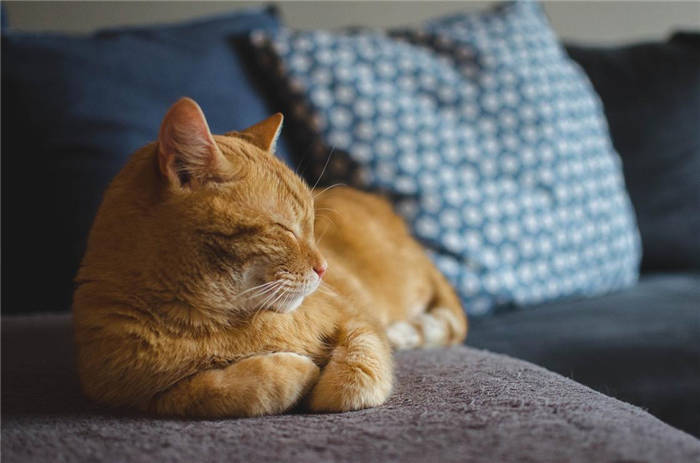
Many owners wonder why a cat doesn't purr. If you notice that your four-legged, whiskered friend suddenly stopped purring, look at the cat's health. He may require specialised care. Contact your vet. He will help you find out the cause, and together we will be able to correct the physical or mental condition of the cat.
When there is no apparent cause of illness, injury or stress, you should observe the cat's behavior. The animal is probably worried, afraid or has lost confidence in its owner. In this case the following actions will help to make the cat purr:
- Attention. Play with the fluffy more often, say affectionate words to him, stroke him gently.
- Tasty food. Offer your cat tasty and healthy treats. Make him happy with his favorite dishes.
- Affection. Not only people need affection and a good attitude. All animals need love and care of the owner, otherwise the pet will stop feeling safe and will stop trusting the owner. And cats do not want to purr if they do not feel loved and important.
Purring is not only a sign of a cat's pleasure. Often cats purr because of stress or pain. Observe your cat and give him help and support in a difficult situation.
What happens inside a cat when it purrs?
A pet's purr is music to its owner's heart and a signal that the cat is full of gratitude. Cats' ability to purr when stroked has a healing effect on the human body. Many people wonder what causes cats to purr and how they do it.
Purring is a repetitive vibrating sound that a cat is able to make for long periods of time under certain circumstances. This sound can come not only from cats, but also from hyenas, mongooses and badgers. For these cozy vibrations, cat owners are willing to turn a blind eye to many of their pet's antics. This is due to the fact that their ability to purr in the hands of representatives of the cat has a soothing effect on humans.
In this case, the system of occurrence of these sounds is not fully investigated. Scientists have come to the conclusion that cats may purr in different ways, and it depends on their breed. There are several different versions regarding the mechanism of purring:
- False ligaments. A cat has regular vocal cords that allow it to make a "meow" sound. As for the purring sound, it is produced by vibrating the bones that are located under the tongue.
- Sinus sinuses. This version refers to the activity of the vascular system. When the cat has a special emotion, a change in blood pressure begins, due to which a vibration is generated in the chest cavity.
- Lungs. Since the cat's "roar" is carried out during rhythmic breathing, it can also be assumed that the lungs are involved in the appearance of these noises. The intercostal and diaphragm muscles work intensively.
In general there is no exact answer to the question, how exactly cats make their traditional purring noises. Professional zoologists and veterinarians believe that the vibrations arise from the cat's state of mind.
Why does a cat purr?
There are theories according to which it becomes clear why a cat begins to purr softly.
- Gratitude. Pets purr at the moment when they want to say thank you to their owner for feeding them deliciously, warming them with their warmth, stroking and caressing them. The rumbling cat is content with her life.
- A peaceful state of mind. When at rest, the cat purrs faintly. It is not uncommon for such sounds to be produced by kittens being fed by their mother.
- Demonstration of emotion. Children think that a cat's purring is a way of singing songs. Using different intonations of its vibrating sounds, the animal gives away its mood at certain times. Humans behave in a similar way, sometimes humming to themselves.
- Dialogue between kittens and their mother. Quietly purring, little kittens tell the adult cat that they're okay, they're full, and they're going to sleep.
- In the process of self-medicating. In times of illness or stress, it is also not uncommon for cats to start rumbling – this helps them regain their relaxed state. Thanks to the vibrating sounds, blood circulation is normalized, speeding up the metabolism. By purring, cats are calmed and warmed.
- Before bedtime. Pets may begin to purr softly, setting themselves up for sleep. Because of this behavior, cats always get a great night's sleep.
- Display of hunting instinct. In some cases cats purr militantly – for example, when they show interest in birds outside their window.
- Frightened. A sense of fear in the animal may also be accompanied by an excited purr, which may indicate that the animal needs protection.
- Possession of desired. If a cat wants a treat from its owner, it begins to purr affectionately. As a rule, it is impossible to resist such sounds.
- Illness. A loud and disturbing purr can signal that the animal is unhealthy. In this case, you should take the cat to the vet.
As we can see, there are many reasons for purring in cats. And an attentive owner will always determine why his pet behaves that way.
How does it purr – physiology
The purring sound originates between the base of the skull and the base of the tongue. Impulses in the cat's brain cause the muscles around the vocal cords to contract. The bones under the tongue create a vibration, which spreads throughout the animal's body.
It is the structure of the hyoid bone of whiskers that determines their ability to purr. Domestic cats have a triangular shaped bone, due to which they are able to purr continuously both on exhalation and on inhalation. Large members of the feline family have a rectangular bone under their tongue. This allows them to make roaring sounds to intimidate and scare off enemies, but they can only purr on exhalation.
Due to the difference in the location of the hyoid bone in large representatives of the feline family and domestic cats, the latter are not able to growl loudly. The hyoid bone of cats is rather stiff and well-boned, whereas in large carnivores it is flexible, partially cartilaginous and attached to the skull by elastic ligaments. To purr, cats use air passing through their larynx, which is modulated by their vocal cords. Lions have a large block of fibroelastic tissue on their sides near their vocal cords, which apparently prevents purring. This is one of the significant differences between the subfamilies of big and small cats.
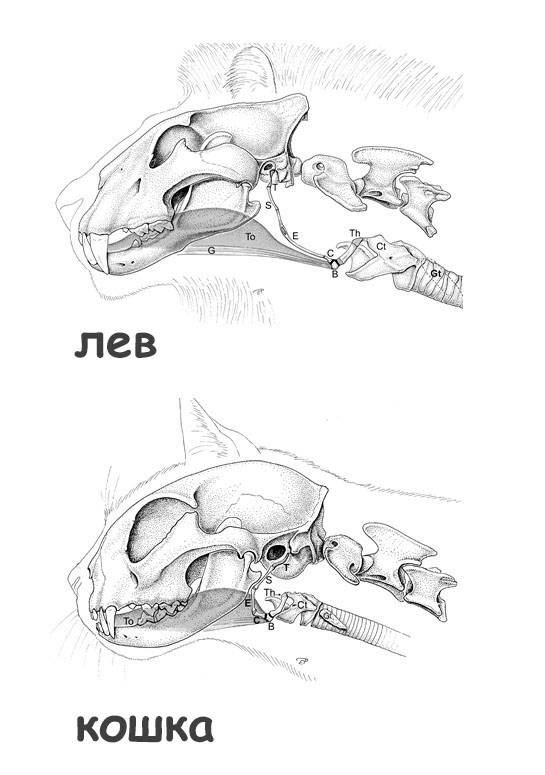
A video with a visual demonstration of the anatomical causes of purring:
Many other animals, such as guinea pigs, rabbits, raccoons, and hyenas, make similar sounds to purring. But it can't be fully called a purr. Only cats can truly do it.
Synopsis! It is impossible to listen to the animal's heart and lungs while purring.
Why a cat purrs – causes
The causes of purring in cats can be very different. Consider the most likely and common ones.
- Pleasure and peace of mind – The cat is calm, relaxed, satisfied and satisfied, nothing bothers him.
- Communication between mother and kittens – Newborn kittens are blind and are not yet able to communicate by meowing. By purring, the mother lets the babies know that they are safe, and the babies show her that they are feeling well.
- The pet wants to show love and loyalty – For a cat, it's a gesture of trust, it establishes a kind of bond with a loved one. And after a nice game or a tasty meal, it can show its gratitude in this way.
- He wants to get something – it can be a treat, a favorite toy or simply affection and attention.
- Getting ready for bed – During purring, cats are calmed and relaxed, and sleep will be stronger and sweeter.
- Pain Relief. – Cats can purr if they are hurt or ill. A signal is sent to the brain centers of the brain and the release of endorphins reduces the pain sensation
- If they are sick – Purring too often and for too long can indicate the presence of disease in a pet. For example, this is one of the symptoms of infectious feline peritonitis.
- Communication with other individuals – Some cats show interest and friendliness to other animals by purring. Males may purr next to other, older or weaker cats. This is their way of showing that they will not attack.
- Anxiety and fear – The animal may be anxious before an important event or something bothers him, such as a stranger coming into the house.
Synopsis. Some cats purr during childbirth, soothing and easing the pain.
Why does a cat purr when stroked and what does that purr mean?
I love these affectionate little fluffers and I can't imagine how I would live without my cat. All cat and cat owners often hear their cat purring, it's such a pleasant melody. The house immediately fills with coziness and comfort.
Contrary to some beliefs, cats do not have a specific body part or vocal organ that makes them purr. The purring actually comes from rapid vibrations in their vocal apparatus.
How does purring begin? It actually starts with the central nervous system as a signal that goes to the cats' vocal apparatus. The muscles in the vocal apparatus tense and quickly relax as the cat inhales and exhales, which creates vibrations that can be heard and seen.
Cats have been hearing purring since they are babies, their mothers use purring to call kittens to her for food and love, because when they are first born, they are deaf and blind. Kittens show their mother that they are okay by purring in return, which also helps them bond with her.
As cats get older, they purr to show that they are happy and content, and even to soothe themselves. Purring is used as a way of communicating with people, it's how they talk to us.
Can cats purr for different reasons
Yes, cats purr for a variety of reasons. Cats purr when they are happy and relaxed, as well as when they are hungry, stressed, or in pain. How can you tell the reasons for purring?
The owner knows his cat best, so it's worth paying attention to when a cat purrs. For example, he purrs when it is approaching feeding time, then he is probably hungry.
A cat that's full, doesn't want affection, and purrs for seemingly no reason? It's worth a visit to the vet to make sure the cat is healthy.
Because cats produce endorphins while purring, the veterinary community believes that this is why cats purr to calm themselves. Purring can also be a way to heal their pain, sometimes mother cats purr during childbirth.
Cat purring as a way to manipulate
Do cats really know how to purr to get their owner to do something for them earlier than usual? Yes! When a cat wants something done for them, they will add a high-pitched sound that most owners find incredibly annoying.
That way, their purring can't be ignored, and they're more likely to get what they want.
How does a cat's purr affect humans
Cats have made their way into people's families and hearts, and for good reason. They're cute, cuddly and funny, but not everyone knows that they have a significant impact on human health.
A cat's purr has a calming and comforting effect on humans. In fact, having a cat can help reduce stress and blood pressure. The soothing sound of purring with the natural calming effects of stroking a cat's fur is a huge benefit to human health.
Cats purr for . exercise. Yes, they do. Purring is actually a form of low-impact exercise for cats. Cats are experts at conserving energy, sleeping 16 hours a day or just idling away.
Nevertheless, purring may well stimulate muscles and bones if the cat is not literally lifting a paw!
Deciphering a cat's purr
"I'm happy." – if the cat is lying on its back, curled up with its eyes closed and not making any tail movements, this is a sign of a happy cat.
"I'm in pain." – Sick or injured cats will purr to help soothe and heal faster. To find out if a cat is purring because it is in pain, you have to pay close attention to everything it does.
"Hi, Mommy, I'm fine." – A purring kitten probably wants her mom. If the cat mom and her kittens live in the same house, you need to return the kitten to her mom. If it is a kitten who has just been adopted, make sure it is fed, feels safe, and isn't freezing.






